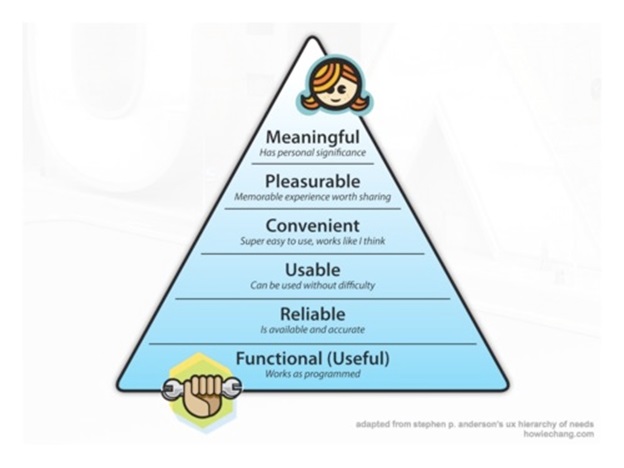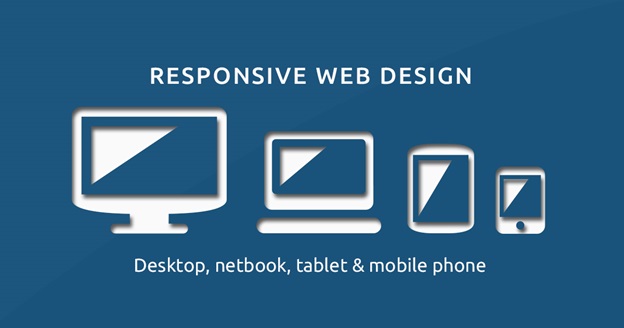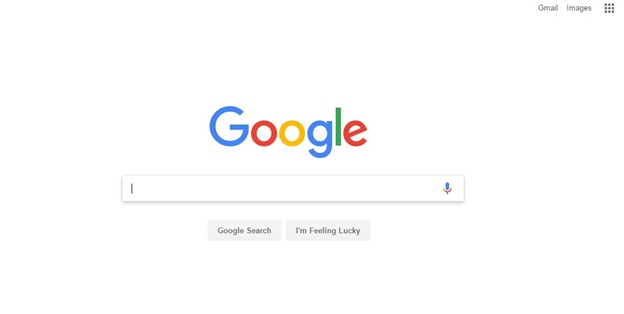Traditional form of web design is slowly but surely coming to an end. UX design will become the next big thing in web design, especially from 2017 and onwards.
But before we talk any further, let’s start with the basics first. What is UX design? Why is it expected to rule the web designing industry for the next few years?
There are plenty of questions that need to be answered. In this article, we’ll try explaining as many of them as possible.
The Actual Difference between Traditional Web Design and UX Design
Traditional form of web design is PURELY based on looks. “How does a website look from the visitor’s point of view?” That’s all the designers and the website owners cared about.
Today, it has actually gone through a sea change. UX design stresses more on user experience than looks. Here is a pyramid diagram explaining the UX hierarchy of needs –

The UX hierarchy of needs
Source- Flickr
UX design deals with four major questions. These are –
- How does a visitor experience your website as a whole? Is it aesthetically appealing enough to him/her?
- Is your website comprehensible enough?
- Is your website legible enough?
- Does your website have a distinct call to action button?
Get a positive answer to the aforementioned questions and your design is sorted for sure.
To get a positive answer to the questions highlighted above, you need to take a few factors into account especially from the point of view of the design:
- The loading time of the webpage (Increased loading time can really hurt your site’s overall UX. For more details on loading time, you may refer to this article. Keep the loading time to its bare minimum).
- The overall maintenance of the visual hierarchy of the page.
- Content quality and content highlights.
- Easy accessibility.
UX design more or less takes into account all of the aforementioned factors. So you can very well see that the difference between traditional web design and UX design is quite distinct indeed.
Why is UX Designing the Next Big Thing in Web Design?
There are specifically three reasons. Let’s systematically go through each of them –
- New Technology requires a Wider Approach
For a long time, webpages were specifically designed to work on traditional PCs or laptops. Mobile optimization wasn’t enough in practice, and hence, the designers and the owners didn’t pay much heed to it.
Not anymore!
Today, the advent of mobile internet has taken the number of mobile traffic almost off the roof.
Be it a mobile or a TV or a tiny smartwatch, responsive design cropped up in practice making content look good on any device. This ensured that businesses get more traffic from the mobile internet with each passing day resulting in more and more businesses.

Responsive web designing makes content work great on ANY device
Source- Wiki
On the basis of all that, I can easily say that UX designing gains more grounds over traditional web designing as a result of its versatility and accessibility.
- Design is not about how things look; it’s more about how things WORK
More people are realizing this every day. To quote Steve Jobs 10 years back –
“Most people make the mistake of thinking design is what it looks like. People think it’s this veneer – that the designers are handed this box and told, ‘Make it look good!’ That’s not what we think design is. It’s not just what it looks like and feels like. Design is how it works.”
His words finally came true in the last few years, when the importance of UX design went straight off the roof in 2017 itself.
- The rise of CMS (content management system)
In the past few years, content management systems like Joomla, WordPress, etc, have gained enough popularity because of their ease of accessibility.
Most people can design a website without having any prior knowledge of web design. The presence of a large number of free and premium templates makes it easier for the amateurs to structure a website the way they deem fit.
You don’t need to put in any code. Just a click, drag and drop here and there – enough to get the job done.
As a result, most content management systems are seen as a potential threat by many traditional web designers. Most people who had no prior idea about web design, can now design their websites with just a few clicks here and there (though the aid of CMS).
Thus, the chances of a job contract going down significantly from the designing point of view. The only thing unique about such circumstances is that this can act as a savior. UX design is something unique indeed. So it can definitely be an ace in the hole for them provided they are willing to learn the same for their benefits.
So do you have any doubt now after going through all the three reasons highlighted above? UX design is surely becoming the next big thing in web designing as water is of being wet.
The different benefits of having a website with good UX
- Increased productivity.
- Increased possibility of sales.
- Significant reduction of support costs.
- Significant reduction in website development costs and time.
- Reduced cost of maintenance.
- Improved customer satisfaction which, in turn can up a business’ credibility and brand value.
A few examples of sites having an excellent UI (user interface) resulting in an improved UX
1.Apple

2. Amazon

3. Google (It’s a classic)

Conclusion
If you are a web designer, it’s high time you adopt UX designing as soon as possible. Plenty of tutorials are available on the internet. Get into them ASAP. A step like that can really be a difference and make you a standout among the crowd in the long run.
We wish you the best of luck with your career.
Image Courtey: pixabay.com




